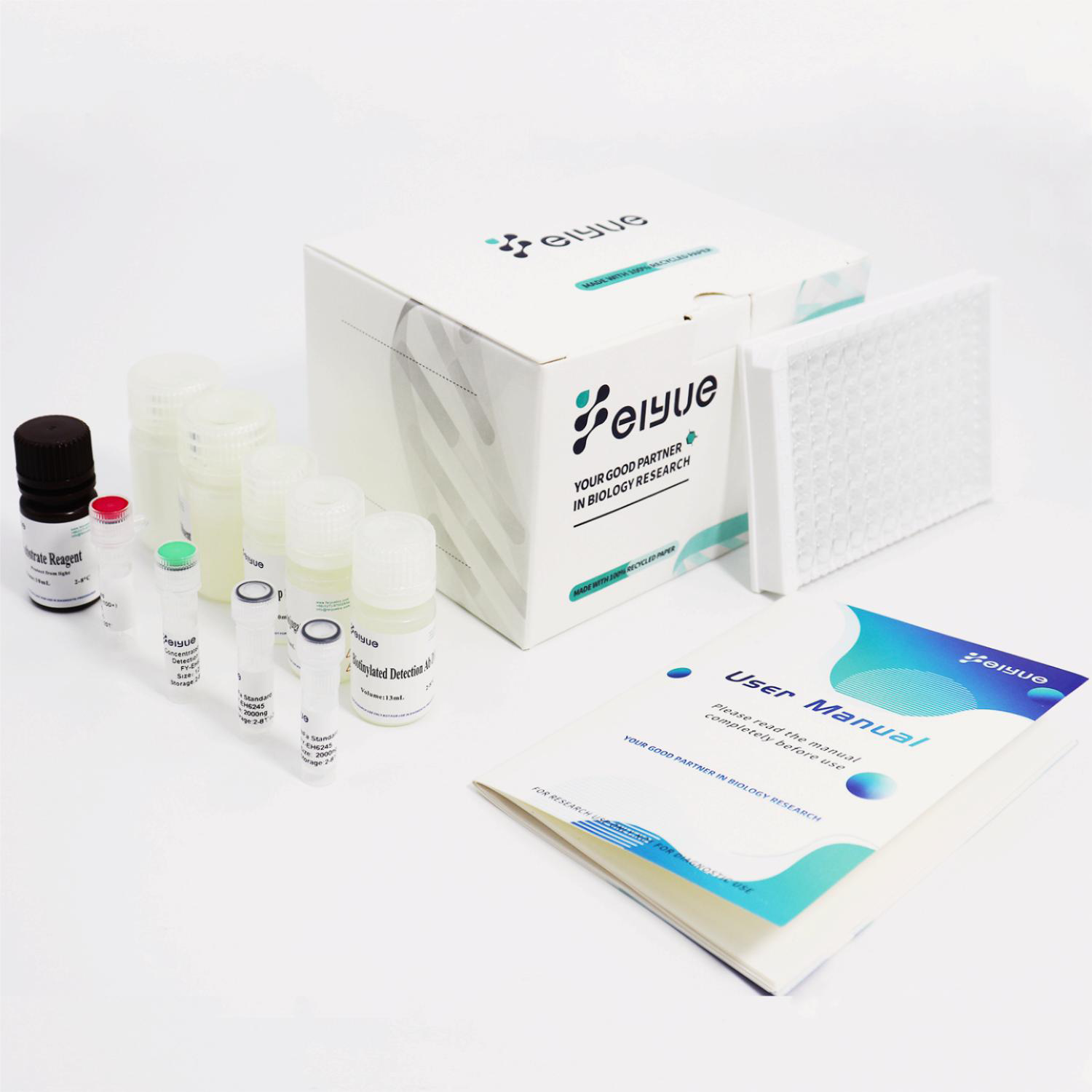Mouse TIMP-1(Tissue Inhibitors of Metalloproteinase 1) ELISA Kit
Copy Product Information
Product No
FY-EM1495Sample Type
Serum, Plasma, Tissue homogenate and Other biological samples;Sample Volume=100μLAssay Time
3.5HPurchase details
 Contact supplier to negotiate price details
Contact supplier to negotiate price details
 100% Quality Assurance
100% Quality Assurance
 Fast Shipping
Fast Shipping

Product Details
Product Name in English:
Mouse TIMP-1(Tissue Inhibitors of Metalloproteinase 1) ELISA Kit
Species:
Mouse
Alternative Name:
CLGI; Collagenase inhibitor; collagenase inhibitor); EPATIMP-1; EPO; erythroid potentiating activity; Erythroid-potentiating activity; Fibroblast collagenase inhibitor; FLJ90373; HCI; metalloproteinase inhibitor 1; TIMP metallopeptidase inhibitor 1; TIMP1; TIMP-1; TIMPtissue inhibitor of metalloproteinase 1 (erythroid potentiating activity; Tissue inhibitor of metalloproteinases 1
Uniport ID:
P12032
Assay Type:
Sandwich
Standard:
2500pg/mL
Sensitivity:
16.39 pg/mL
Detection Range:
39.06-2500pg/mL
Assay Time:
3.5H
Sample Type:
Serum, Plasma, Tissue homogenate and Other biological samples;Sample Volume=100μL
Test Principle:
The test principle applied in this kit is Sandwich enzyme immunoassay. The microtiter plate provided in this kit has been pre-coated with an antibody specific to TIMP-1. Standards or samples are added to the appropriate microtiter plate wells then with a biotin-conjugated antibody specific to TIMP-1. Next, Avidin conjugated to Horseradish Peroxidase (HRP) is added to each microplate well and incubated. After TMB substrate solution is added, only those wells that contain TIMP-1, biotin-conjugated antibody and enzyme-conjugated Avidin will exhibit a change in color. The enzyme-substrate reaction is terminated by the addition of stop solution and the color change is measured spectrophotometrically at a wavelength of 450nm ± 10nm. The concentration of TIMP-1 in the samples is then determined by comparing the OD of the samples to the standard curve.
Technical Data
As the OD values of the standard curve may vary according to the conditions of the actual assay performance (e.g. operator, pipetting technique, washing technique or temperature effects), the operator should establish a standard curve for each test. Typical standard curve and data is provided below for reference only.

| Concentration | OD1 | OD2 | Average OD | Corrected |
|---|---|---|---|---|
| 2500 | 2.308 | 2.31 | 2.309 | 2.284 |
| 1250 | 1.514 | 1.522 | 1.518 | 1.49 |
| 625 | 0.883 | 0.883 | 0.883 | 0.859 |
| 312.5 | 0.4 | 0.401 | 0.401 | 0.376 |
| 156.25 | 0.221 | 0.222 | 0.222 | 0.197 |
| 78.13 | 0.121 | 0.121 | 0.121 | 0.097 |
| 39.06 | 0.066 | 0.066 | 0.066 | 0.042 |
| 0 | 0.024 | 0.024 | 0.024 | 0 |
Precision
Intra-assay Precision (Precision within an assay): 3 samples with low, mid range and high level were tested 20 times on one plate, respectively. Inter-assay Precision (Precision between assays): 3 samples with low, mid range and high level were tested on 3 different plates, 20 replicates in each plate, respectively.
| Item | Intra-assay Precision | Intra-assay Precision |
|---|---|---|
| Sample | 3 | 3 |
| Replicate | 9 | 18 |
| CV(%) | 5 | 8 |
Rate of recovery
The recovery of spiked at three different levels in samples throughout the range of the assay was evaluated in various matrices.
| Sample Type | Range(%) | Average Recovery(%) |
|---|---|---|
| Serum (n=8) | 82-94 | 88 |
| EDTA plasma (n=8) | 82-98 | 90 |
| Cell culture media (n=8) | 80-97 | 88 |
Linear
Samples were spiked with high concentrations of target proteins and diluted with Reference Standard & Sample Diluent to produce samples with values within the range of the assay.
| Serum (n=5) | EDTA plasma (n=5) | Cell culture media (n=5) | ||
|---|---|---|---|---|
| 1:2 | Range (%) | 90-99 | 80-92 | 85-94 |
| Average (%) | 94 | 85 | 88 | |
| 1:4 | Range (%) | 95-106 | 86-102 | 90-99 |
| Average (%) | 105 | 86 | 96 | |
| 1:8 | Range (%) | 87-101 | 87-103 | 95-102 |
| Average (%) | 93 | 92 | 95 | |
| 1:16 | Range (%) | 82-97 | 85-101 | 82-90 |
| Average (%) | 85 | 93 | 84 |
Assay Procedures

Related literature
Related Products





 DataSheet
DataSheet 